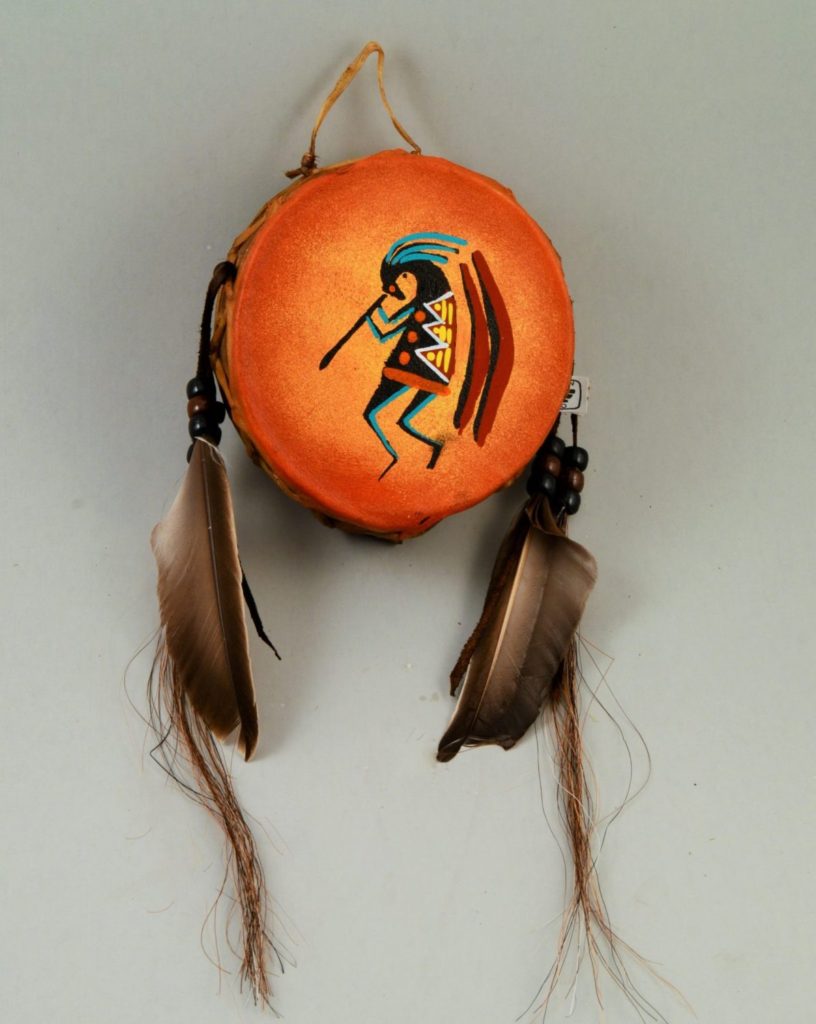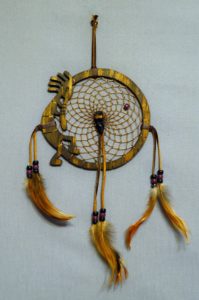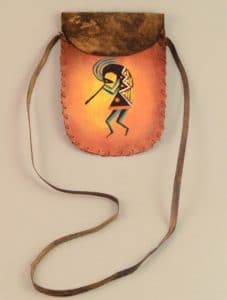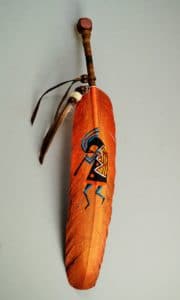Kokopelli has appeared in Native American stories for more than 3000 years. He is often depicted as playing a flute and having a humpback or pack on his back. He is known as a fertility deity, often with an oversized phallus and feathers or antenna-like protrusions on his head.
Kokopelli’s Humpback
Some believe that Kokopelli’s humpback evolved from a sack that was slung over his shoulder that caused his back to bend. What was contained in his sack varies among different Native American tribes.
In Pueblo mythology, Kokopelli is depicted as carrying seeds, babies, and blankets in his hump and offered them to the maidens of the village. Kokopelli is also a wandering minstrel with a sack of songs on his back who trades old songs for new ones.
In the Navajo traditions, Kokopelli’s hump was filled with clouds, seeds, and rainbows. He was a minor god of hope and plenty and brought forth seeds and food to the people.
The Hopi believed Kokopelli’s hump carried deer skins, shirts, and moccasins which he used to barter for brides or babies to give to the young women of the village. The Hopi also believed Kokopelli carried all the seeds of the world which he scatters on the ground every Spring as he travels from village to village.
The Anasazi saw Kokopelli as a fertility spirit during corn planting season. A visit from Kokopelli assured a plentiful crop season.
To the Zuni Kokopelli was a rain god and a spiritual priest with healing powers.
Many tribes believed Kokopelli carried songs on his back while his flute playing brought happiness and joy. His magical music can also make the sun come out to listen and soothe the earth to make it fertile for planting. His songs could also inspire creativity, make good dreams come true, and bring good luck and prosperity to those who deserve it. Kokopelli was generally welcomed wherever he went.
Kokopelli is also thought to be a trickster. He tricks the most beautiful girl in the village into having sex with him. Some believe the Trickster figure as a sort of important cultural “release valve.”
Kokopelli is also associated with a traveling salesman, insect, musician, warrior, and hunting magician.
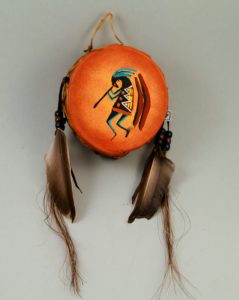
Kokopelli and the Corn Seed
Featured prominently in ancient Native American stories is the legend of Kokopelli, a humpback flute player. Kokopelli made musical sounds with his flute and gave happiness to those around him.
In one story a great serpent appeared to Kokopelli and gave him sacred seeds of corn. Kokopelli ate most of the corn, which was then stored in the hump of his back and transformed him into an insect. The rest of the corn seeds which Kokopelli did not eat became scattered before him.
As he played his flute, the corn seeds danced about and traveled throughout the village and were captured by some of the people. Some of the seeds were taken away by the wind. But one seed settled into the ground and grew to be a great corn stalk.
Kokopelli appeared by the giant corn stalk and continued playing his flute as he started climbing the tall corn stalk.
Some people who did not capture the airborne seeds followed Kokopelli up the corn stalk. As they climbed the corn stalk, it disappeared below them into the inner most world.
The others who had seeds remained behind and became the inner world kachinas (Kachinas were spirits in the mythology of Native American culture, especially among the Pueblo people).
The people journeyed from the first inner world to the second and third inner world.
Meanwhile, Kokopelli guided the people following him into the fourth world. In this world the corn seeds stored in Kokopelli’s hump were planted and corn is now passed back and forth between the worlds.
Many believe this story was a way of showing the transitioning of Native American society from a nomadic existence to an agricultural and community-based society.
The Kokopelli image is found throughout the southwest on pottery, carvings, jewelry, and paintings. He is probably the best known Native American image.
At Southwest Arts and Design the Kokopelli image is reproduced on a variety of items, such as Hand Painted Feathers, Painted Drum, Wood Dream Catcher, and Leather Medicine Bag.

